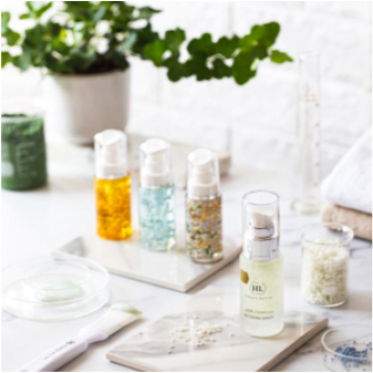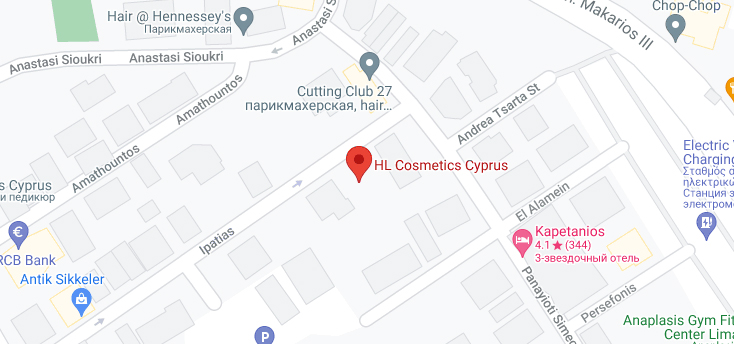
Skin Rejuvenation
Along with the biological aging process of the skin, sun exposure and various environmental damages, such as climate, air pollution, smoking etc., also affect the skin and accelerate its aging. Over time, skin damages accumulate and manifest themselves in skin appearance and texture. The skin suffers from dehydration and loss of moisture, loses its radiance and slowly becomes dull, yellowish and lifeless. Due to the damage caused to the collagen and elastin fibers, the skin also loses its elasticity. Wrinkles and creases appear, and the damage of the sun\'s radiation causes changes in the dispersion of the melanin pigment, resulting in the appearance of skin spots.
Modern cosmetics have effective tools that can be used to renew the skin, repair these damages and achieve a younger, fresher and smoother skin appearance. The most prominant components/ingredients for this purpose are alpha and beta hydroxy acids and retinol. They now play such an important role in dermatological and cosmetic treatments that, in fact, it is difficult to imagine this field without them. Nearly 40 years of research have yielded many studies indicating the great effectiveness of these components in skin rejuvenation, in repairing age-related and environmental skin damage, and in being able to bring about a visible reduction of wrinkles and fine lines, and to improve skin texture and firmness significantly. In recent years,as research progresses, their additional effects on skin structure and function, in both short and long term, are revealed.
Alpha and beta hydroxy acids
There are two main types of hydroxy acids - alpha and beta. These acids are currently popular in peeling treatments performed by beauticians, and there is a consensus in the scientific community regarding their effectiveness. Both types of acids - alpha and beta hydroxy, work by peeling off the skin surface. However, each acid has its own unique mechanism.
Alpha Hydroxy Acids (AHA) Alpha hydroxy acids, which were initially used to treat excessive skin irradiation and other skin conditions that affect skin regeneration, have been proven in recent decades to be one of the most effective cosmetic ingredients in rejuvenating and restoring the skin, blurring wrinkles and lightening age spots. These acids are carboxylic acids, naturally found in milk, fruits and plants, including glycolic acid (found in sugar cane), lactic acid (in milk), citric acid.
(in citrus fruits), malic acid (in apples) and tartaric acid (in grapes). The most commonly used ones are glycolic acid and lactic acid.
Numerous studies examining their activity indicate that alpha hydroxy acids work on both epidermis and dermis. It has been found that when applied to the skin, they stimulate the exfoliation of the epidermal cells in the stratum corneum layer - the outermost layer of skin, by coupling and neutralizing the calcium ions found in the bonds between these cells. Reducing the concentration of calcium ions loosens the bonds between the epidermal cells and allows them to peel off, resulting in the shedding of dull and rough skin and boosting cell regeneration. In addition, the ability to bind and neutralize calcium ions between epidermal cells has also been shown to neutralize free radicals and other pollutants - meaning that alpha hydroxy acids also have anti-oxidant and anti-infectious properties.
In addition, these acids improve the function of the skin barrier and restore the moisture level in the skin. They can even penetrate the dermis layer, where they improve the quality of collagen and elastin fibers and increase their density, boost increased collagen and hyaluronic acid gene expression in the dermis and increase the skin volume. These effects significantly alleviate wrinkles, and improve skin moisture and other properties such as elasticity and tone. Beta-hydroxy acid
The beta-hydroxy acid is also called salicylic acid, being a derivative of acetylsalicylic acid - the active component in Aspirin. It is very similar to the alpha hydroxy acids, and it also works to weaken the bonds between dead skin cells and helps in peeling and rejuvenating the skin. However, while alpha-hydroxy acids are water-soluble, salicylic acid is fat-soluble. This structure allows it to penetrate the skin through the fat follicles. Thus, in addition to peeling off the outermost skin layer, it can penetrate the pores and sebaceous glands, and peel the skin cells that accumulate inside the walls of the pores and normalize the activity of the glands. In addition, salicylic acid has anti-inflammatory and antiseptic features against bacteria and fungi. Therefore, it is used in preparations for treating dermatitis, psoriasis, and seborrhea (characterized by fat secretion) as well as in antibacterial preparations (in a concentration of up to 1%), and in exfoliating preparations for oily skin and for acne treatment (up to 2% concentration).
Retinol Retinol is a derivative of vitamin A. The active component in retinol, and in Retin-A - another derivative of the vitamin - is retinoic acid. The functions of vitamin A in the skin are well known: it is an essential component of the process of cell differentiation, thus enabling the regeneration of skin cells; It increases the production of collagen and elastin which are responsible for the strength, firmness, and elasticity of the skin, and thus also affects the deep skin layers and contributes to skin firming. It also helps regulate the production of melanin pigment, and thereby helps treat skin blemishes and lighten pigmentation spots. Retinol can also bind to receptors in skin cells and cause them to behave like healthy, young skin cells.
Retin-A is FDA approved for the treatment of wrinkles since 1996, and can only be prescribed by a doctor, while retinol, which contains lower concentrations of active retinoic acid, is approved for use in cosmetic products and preparations. The great advantage of retinol is
that when applied on the skin, it breaks down to retinoic acid that acts on the cells. Similarly to Retin-A, retinol makes it possible to alleviate wrinkles and laugh lines, skin tone and texture. However, these effects can be achieved only after prolonged use.
Be beautiful and healthy with professional HL Cosmetics.
Best Regards HL Cyprus Team




